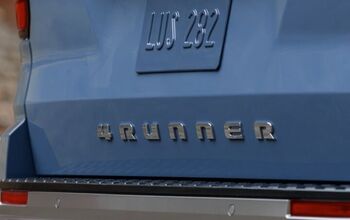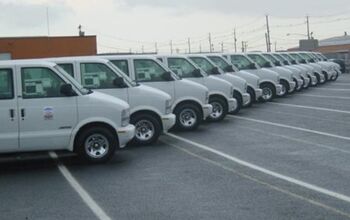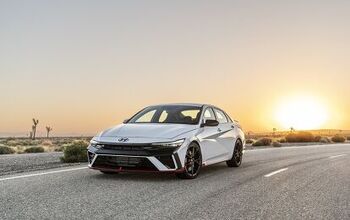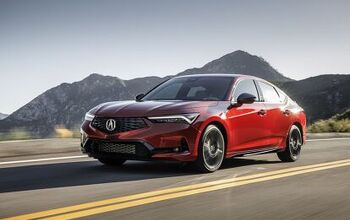The Big 2.5's Bosses: TMI?
Quick! Which is bigger: San Antonio, Texas or San Diego, California? It’s San Diego. And here’s the kicker: a classroom of German students is more likely to get the right answer than you are, for one simple reason: more of them have heard of San Diego than San Antonio. Try another one. Should GM build the new Chevrolet Malibu? Despite auto industry execs’ huge salaries, you, a car guy or gal, are more likely to get it right than GM's top execs. And for the same reason: your gut instincts are more reliable than factual analysis.
In his book “Blink: The Power of Thinking Without Thinking,” author Malcolm Gladwell points to a growing body of evidence that puts the kibosh on the notion that decision-makers always do their best work when they’ve got plenty of time and exhaustive information at their disposal. Gladwell says that decision-makers often do a better job using less information and less analysis. In situations as diverse as heart attack diagnosis, military planning and running an NBA franchise, fast reactions win the day.
Of course, this axiom doesn’t apply to every situation. Automakers need smart analytical people with reams of data to design combustion chambers, purchase steel, manage currency fluctuation risk, and other complicated information processing tasks. But at the top management level, executives would make better decisions by being ‘fast and frugal’ with both time and information.
Imagine the meeting where GM decided on whether or not to green light the Pontiac Aztek. No doubt GM’s in-depth statistical analysis indicated a ready market for the Aztek’s unique combination of abilities. (Lest we forget, the Aztek was Detroit’s first CAD-CAM creation.) A semi-informed enthusiast would have taken one look at the mutant minivan and questioned the product design department’s sanity right from the git-go.
Bad decision-making mars the history of The Big 2.5. Instead of anticipating gas price instability with large fuel economy improvements, Detroit bet the farm on large SUVs. Instead of dealing with the ‘jobs bank’ and related issues, management simply signed off. Instead of engineering one class-competitive minivan, GM spread its TWAT-winning design over four brands. And so on.
Decision failures of this scope and type occur for one of two reasons. First, ego and self-interest. A doctor refuses to believe that a four-step chart can diagnose chest pain better than he can. An NBA general manager imagines he sees potential in an underachieving player. A high-level GM executive sees the Uplander as a hit that will shower him with reflected glory. Thus smart people make dumb decisions.
Second, an environment of excessive informational analysis subverts ‘fast and frugal’ decision-making. A doctor looks at charts rather than the patient. A general in a war game overwhelms his subordinates with orders and intelligence, rather than freeing them to react to battleground conditions. Or as GM managers discuss the details of the Impala SS, no one stops to ask “Why the heck is this Corvette-engined thing front wheel-drive?”
Gladwell notes that fast, frugal and information-sparse decision-making tends to produce conservative, obvious and safe decisions. This would seem to run counter to the “Bold Moves” rhetoric currently infecting Detroit. But safe, obvious moves are exactly what The Big 2.5 needs.
Successful automakers follow a remarkably simple formula: build a car people want and keep making it better. The Porsche 911, the Chevrolet Corvette, the BMW 3-Series, the Toyota Corolla/Camry, and Honda Civic/Accord are all decades-old models, updated every few years. Sometimes, even the domestics get this right (Ford Mustang, GM pickups, Chrysler minivans). Selling last year’s model with slight improvements is a safe, obvious and profitable course.
In contrast, it takes “courage” to design, build and market a “revolutionary” minivan to ‘active-lifestyle’ Gen-Xers; or launch an Audi-shaped Ford sedan; or build a hot looking sports car with less luggage space than Margaret Thatcher’s old handbag. In general, Detroit’s biggest collective ‘bold’ decision is to constantly ditch existing models in pursuit of The Next Big Thing, whether it’s a so-not-an-SUV Crossover or a B-segment fuel sipper. That’s delusional aggressive management at its best.
Decades of deliberate data-rich decisions have left the Detroit automakers in their current predicament. Ford’s hiring of CEO Alan Mulally– who has promised to “recognize our reality and deal with it”– may indicate that a new breed of management is coming. Alas, Ford pulled Mulally out of Boeing’s bean counter hangar, not the one with burnout marks and oil stains. GM’s Wagoner never met a car he didn’t like; his Car Czar Bob Lutz is egomania’s poster, um, “boy.” And DCX’ LaSorda neutered the one designer who could have rescued his company (Ralph Gilles).
Again, smart men all. But one wonders if any of them are capable of making the piercing glimpses into the obvious that their employers’ need to survive.
More by Eric Stepans
Latest Car Reviews
Read moreLatest Product Reviews
Read moreRecent Comments
- Yuda Very dystopian. Not good.
- EBFlex Yes. They don’t work.
- THX1136 I remember watching the 'Wonderful World of Disney' back when I was kid. One program imagined the future. In that future one could get in their car, tell it the chosen destination and the car would take you there without any further intervention. As a pre-teen I thought that sounded pretty cool. Now I'd be more on the side of wanting to drive when I want and letting the car do the driving when I don't. Not scared of autonomous vehicles, not ready to completely abandon driving myself either.
- Dave M. Always thought these were a great design, timeless in fact. But as a former Volvo owner who was bled to death by constant repairs starting around 40k miles, run far far away
- MrIcky no


































Comments
Join the conversation
In other GM news, it looks like the GM executives who continually threatend and brow-beat US suppliers for lower prices, have decided to do the same in South Korea. http://english.chosun.com/w21data/html/news/200701/200701250033.html So, how long before the quality of GMDaewoo products plummets, and supplier relations sour? Nice job, GM! Screw up the one thing you've done right in decades. Idiots.
I wish people would keep their focus on who really has control and leave the line workers alone. While the Job Bank is heavy upon GM, why should it not be? I think the design behind it was to put pressure upon GM to think long and hard about blunders like the Aztec. I have seen GM drive a product into the ground, knowing full and well it will cause layoffs and or the job bank. It seems to me, they know full and well what they are doing. Are they not the brains of the business? Could it be that they plan these things for PR in their favor? I would rather see GM create gotta have reliable products. In that respect, no one would be in the job bank ever again. GM rarely points a finger but they freely let the media point fingers. The line workers really want to work. They have no say in GM's products. Lets put this blame where it belongs ... MANAGEMENT.